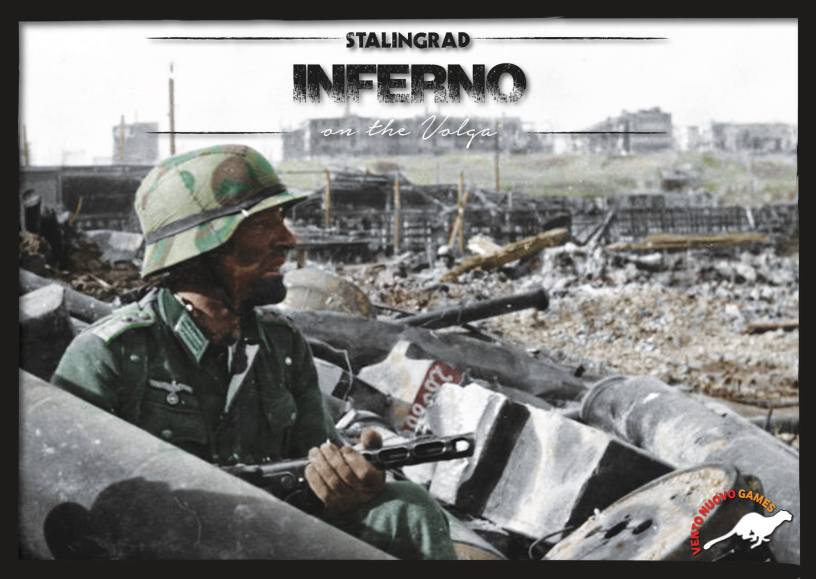Recently, there has been a lot of activity on the VentoNuovo Games website and Facebook page about their newest game Stalingrad: Inferno on the Volga, which just hit Kickstarter earlier this month. I wanted to reach out to the designer Emanuele Santandrea to see if he could give us the rundown on the game and have been very appreciative to Kevin Duke for his assistance in the process. Without further ado, here is our interview with Emanuele Santandrea:
Grant: First off Emanuele, tell us a little about yourself.
Emanuele: Well, I did my military service in the 3rd Bersaglieri Regiment, and got a degree in genetics and worked over 10 years in the Infectious Diseases sector. I’ve been an entrepreneur and started several businesses, and wrote novels and screenplays. I started playing historical boardgames when I was a child and never stopped loving them.
Grant: What games do you like to play?
Emanuele: Those with maps, counters, and Orders of Battle. Sorry, I like to play a LOT of different games.
Grant: What other games have you designed?
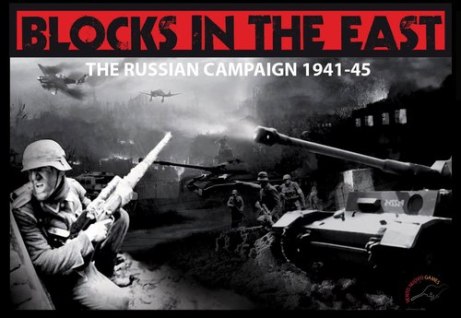 Emanuele: When I was still very young I designed several wargames, but hey I was a child. Who does not have some imagination at that age! The game I launched VentoNuovo Games with was Blocks in the East, which has expanded to include Blocks in the West and Blocks in Afrika, which covers North Africa and the Mediterranean, but also allows for the combining of the other games for huge scenarios. I’ve also done 1914-1918 for Hewlett-Packard, then 1914: Germany at War, Waterloo 200, Moscow ’41, Leningrad ’41, and Bloody Monday, on the Battle of Borodino.
Emanuele: When I was still very young I designed several wargames, but hey I was a child. Who does not have some imagination at that age! The game I launched VentoNuovo Games with was Blocks in the East, which has expanded to include Blocks in the West and Blocks in Afrika, which covers North Africa and the Mediterranean, but also allows for the combining of the other games for huge scenarios. I’ve also done 1914-1918 for Hewlett-Packard, then 1914: Germany at War, Waterloo 200, Moscow ’41, Leningrad ’41, and Bloody Monday, on the Battle of Borodino.
Grant: What do you do for a living?
Emanuele: You mean how much free time I have for living? VentoNuovo is my main focus right now.
Grant: What is your design philosophy?
Emanuele: First, I care a great deal about details, because I think even very small things add up to a bigger effect. People have talked about the Bloody Monday map, for instance, where we see the trace of “autumn colors” coming into the trees, and see bridges and mills (very tiny) which have no effect in game terms. Someone said it looked like we had painted every tree individually. Such things work together for the effect and feel of playing a game, even if they are not part of a Combat Results Table.
Grant: Why did decide to start your own game company VentoNuovo Games?
Emanuele: Nothing is more powerful than an idea whose time has come.
Grant: You may have just given me the answer to this question with your last statement, but what is your company’s mission statement?
Emanuele: When we can take the time to play a game, it’s better to get an intense feeling of the style and period covered…we aim to provide both. Intense flavor makes a good Capuccino. We believe it makes a good game too!
“Intense flavor makes a good Capuccino. We believe it makes a good game too!”
Grant: Your newest game Stalingrad: Inferno on the Volga is currently on Kickstarter. What is your hope for the game?
Emanuele: Get funded!
Voice from the background…
Oh sorry, we got funded in seven hours… Then let’s hope it is even more successful than the previous ones!
Voice from background…
Oh, yes, it is our most successful Kickstarter to date. So I guess the question is to see how successful we can be in numbers and, also very important, to see how players like the game. Every Kickstarter we know we are “meeting” new people to VentoNuovo and we hope they want to know our other games. We also monitor how many of our supporters are on their very first Kickstarter, which means we are reaching people who may not even be “gamers” already. We really want them to be delighted. That is our highest hope.
Grant: While it is one of the most well known battles from World War II, why do we need another game on The Battle of Stalingrad?
Emanuele: Always willing to try a pair of brand new shoes, aren’t you? They might be more comfortable than anything you’ve worn before. In this case, on the rational level, we have the most accurate and highly detailed map, and the best Order of Battle of any Stalingrad game. That’s a start. We also have a “design for effect” thing going on here that I want to watch people learn about. The fact this covers solo, co-op, 2-player, and 3- player gives it some reason for being too, don’t you think?
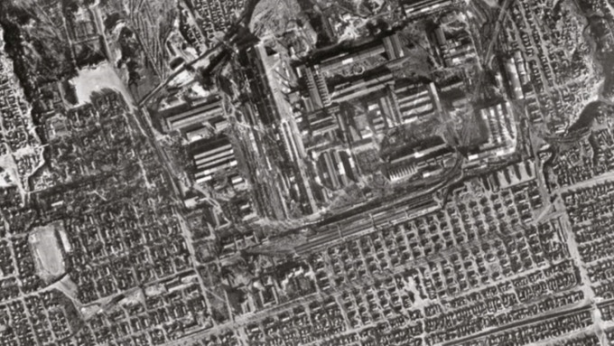
Grant: What is new and different in your design as compared to others on the subject?
Emanuele: Most Stalingrad games begin in mid September, when the Germans are already locked into building-to-building fighting. Mine starts in mid August. The Germans still have to do their blitzkrieg to isolate the city and need to do that well. Once they have, then they can decide where they want to apply their efforts to capture the key parts of the city.
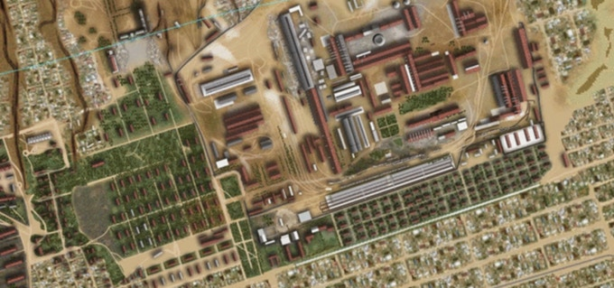
I wanted to make my game first as a solo design and then offer the other play options. The situation and Soviet AI make for a real challenge to the German player. I wanted someone to be able to wrestle that challenge on their own, any time they liked. Making it a 1 v 1 game might have been a next step, but then I saw the potential for letting two live players work together against the AI. So if you have a friend there, you can choose between going head to head or working together. And with a game time of an hour or less, you can do BOTH! Since we had the co-op and 1 v 1, that meant it was a natural for a good 3 player game, and there are not many of those.
But like the Kickstarter says, the first thing players will notice is the map. I see you have a question about the map, so I’ll talk in more detail there.
Grant: What games have inspired you in this design?
Emanuele: There are several games on Stalingrad, and I have played them all, but Inferno is completely different. I think there is as much inspiration in the map as anything else. This is not someone’s idea of what Stalingrad might have looked like. This IS what it looked like, right before the Luftwaffe bombing started changing everything. Having that in front of me inspired me to present the challenges in a new and different way.
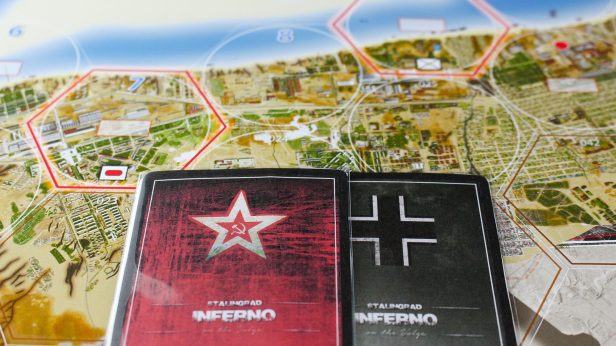
Grant: How does the game use cards to move the action along? Can you give us a few examples of the cards and tell us how they work?
Emanuele: Cards are important in the design, but it is not a “card-driven-design.” Most of the cards add more units or combat capabilities to each side. There is a system for the Soviet cards in the solo games. Some cards add “Leaders,” which create changes in the abilities of specific units. And, ultimately, the Soviet deck regulates when the game ends. When its last card is drawn, the Germans have lost.
Examples? Well, we have things a player expects to find in Stalingrad. Stukas and Artillery can add to attacks but also increase the chances of buildings turning into rubble (which of course the Soviets love). There are Snipers on both sides who can whittle away at unit strength. Other cards, like the German Leader Hoth, give German armor more tactical capability…when they are attacking in good terrain.
Grant: Why did you feel a block wargame would best share your vision of the battle? What advantages do blocks offer?
Emanuele: I’ll start with the easy part. I like wooden blocks for their appearance, for the ease that they allow “fog of war,” and for the way they can be used for managing how strong a unit is and how it fights. Being able to rotate the block to show decreasing or increasing strength means easy “step reduction” without the pain of needing multiple counters for the same unit. I haven’t seen a wooden block Stalingrad, so let’s use those good tools in that situation.
Grant: What are the various game play modes available?
Emanuele: Well, as I mentioned before, the game plays Solo, co-op, 1 v 1, and 2 v 2. With each of those, we have a basic game, a more advanced game, and then the “designer’s vision” where I make even more historical complexity available.
So Inferno is a good entry level wargame, but has plenty of meat for the veteran gamer… even before we talk about the map.
Grant: How does the combat system work?
Emanuele: Though there is more to it with modifications and tactical changes, basically each block has a strength in pips that refers to how many dice it rolls in combat, while the color says what counts as a “hit” on the die roll. Poor units will only hit on a 6, while crack units may hit with a 4, 5, or 6. Terrain and unit types and other factors can “absorb” some of the hits. Cards can make some differences, and the tactical situation can dictate whether the defender shoots first or not. It goes from there.
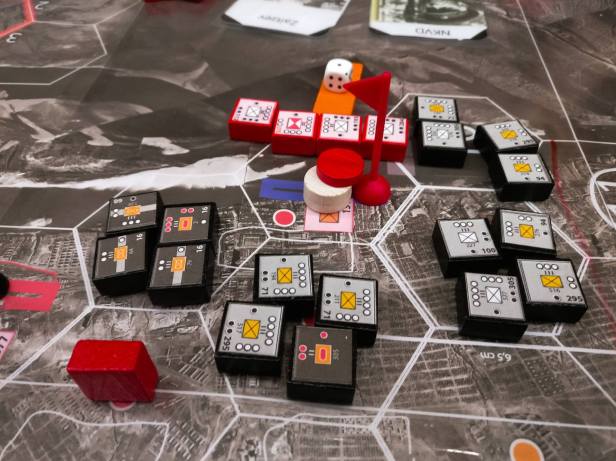
Grant: So we have finally made it to where we will talk about the best part of the game. What is unique about the map and the different views it offers? Who is the artist?
Emanuele: We started with recently released German recon photos, tiled them together, and then began doing some heavy duty computer magic to colorize and enhance the photos. Well, “colorize” is a simple way of describing it. Our artists are redrawing in autocad/illustrator each building one by one in the original color. Someone said something like, “It feels like you’re in virtual reality, August 1942, looking into the city right before the bombs fell.” That statement captures it very well.
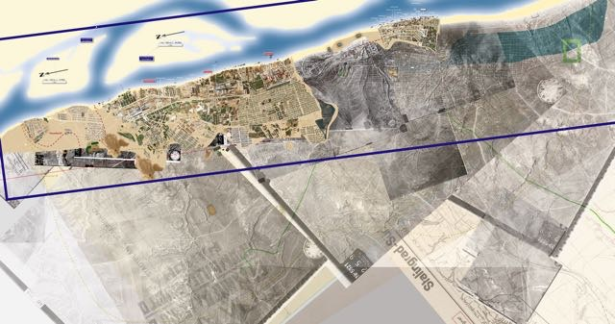
It’s such a beauty, that is why we are offering a “Naked” version of the map—just like the game board but without hexes and game info interfering, and some of the key buildings identified. And, for the real Stalingrad Grognard, we have the “Collector Edition” map, which is the core urban area on a larger scale—90” long, with each building identified. That is pretty special and incredibly time consuming. We realize that some folks will want this map who don’t even play games, and we can work that out with them to just sign into the Kickstarter at the 2 euro level and “add on” the Collector map, and maybe add the “History Bundle” too. Lots of choices!
As to “artists,” I do a lot of the work myself, but we have a team on this. The computer time for each hex on the map is extensive.
Here is a link to a video showing close-ups of the different versions of the maps:
Grant: How do players win the game?
Emanuele: The “short” version is, the Germans win by capturing enough key spaces before the time runs out. This can change some, as “high command” steps in to “help” by altering some conditions, but that is basically it. The Germans want to capture ground. The Soviets want to cling to every hex and look for times when they can counter attack and hurt an over-extended German player. The Soviet card deck is variable—it’s not as simple as “one card per turn means the game lasts for 20 turns.” No, there can be turns where the Soviet player draws no cards, or others where he draws 4 or 5 all at once. So no two games will be exactly alike and the end-point will be highly variable. That’s the real challenge for the German player. If he can take his time and make a set-piece attack with everything he would like to, no hex will stand. Okay—the tractor works is a challenge under any circumstances. But anyway, the game has a time limit—remember, the Soviets have an enormous counter attack building up on the flanks. So the German has to balance risk/reward to win. Because the Soviets can win if they kill enough of the German units, as well as if they just hold on to the key areas.
Grant: What are the various stretch goals with the kickstarter campaign? When do you expect the game to be released?
Emanuele: We have a long list of stretch goals which were really “upgrades” to add more units and cards and complexity. Right now we have achieved most of those. We still have a lot more available, if people keep supporting. Lots of “chrome” things that players will enjoy having. The base game is just 55 euros in the Kickstarter, and—depending on what all ends up going into it—will be 80 or 100 afterwards. This is the best time to get it!
Delivery is always a difficult question for Kickstarters. We have completed three so far, and we made a reasonable target for delivery and ended up delivering early every time. That can set up some high expectations, I know. But there is so much more art/CAD work to be done—that is why our sample map still has a lot of “gray” showing and not much color. So I don’t want to promise “early” again, because this is kind of a once in a lifetime chance to do something really perfect. We’ve stated August 2018 as a delivery time and I’m confident we can meet that. How much earlier we can ship than August I cannot say.
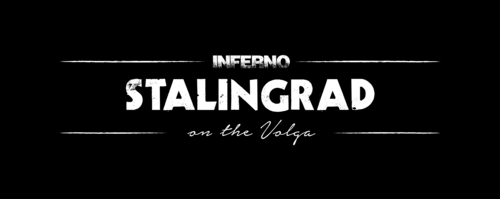
Thanks for your time Emanuele. This game simply looks amazing and I think will turn out to be an instant classic! If you are interested in the Kickstarter campaign for Stalingrad: Inferno on the Volga, it runs through December 30th and you can access it at the following link: https://www.kickstarter.com/projects/m41/stalingrad-inferno-on-the-volga-ww2-solo-2-3-playe
-Grant
